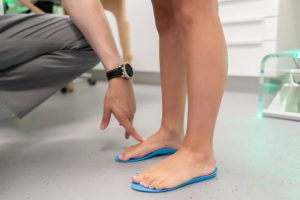If you’re interested in becoming a podiatrist, there are several factors you should consider. The educational requirements and training required to pursue this career path are discussed here as the career outlook. The podiatry specialty can also be divided into a variety of subspecialties, depending on the type of problem you have. In addition to the specialties mentioned above, you may also consider a career in sports medicine or specialised training in the musculoskeletal system.
Education
The Doctor of Podiatric Medicine (DPM) degree is the first step toward becoming a podiatrist. There are nine accredited colleges for this type of degree, and a typical education consists of four years of classroom work and clinical rotations. After graduation, the practitioner completes a three-year residency in a specialised field. Podiatric doctors can specialise in surgery, pediatrics, or many other areas.
A DPM program from Des Moines University includes a state-of-the-art gross anatomy lab and evidence-based clinical care. A student at the Samuel Merritt University School of Podiatric Medicine in California can also pursue a master’s degree in biomedical sciences or public health. Further, a DPM is recognised by both the American Podiatric Medical Association and the American Board of Podiatric Medicine. Regardless of the dual-degree option, a Podiatric Medical degree will lead to success in this field.
Clinical education is recognised in the government’s policy on health professional practice. However, despite the importance of clinical experience, there is little research in this area. A study in Germany, for example, explored the impact of an education program on clinical educators. The authors concluded that a well-rounded education program is vital to advancing the profession. A well-rounded education in this field can increase patient safety and improve care quality. Learn more from Adelaide podiatry.
A doctorate in Adelaide podiatry is required to become a podiatrist. The program takes four years to complete, and graduates can expect to earn a doctorate after completion. Students must pass some components of the American Podiatric Medical Licensing Examination during their residency. State licensing examinations are also required in most states. In addition, students should be familiar with all aspects of the field before deciding to practice it.
Training
Feedback is an important component of clinical learning for students in training in podiatry. It helps students identify areas for improvement and reinforces good practice. Hence, constructive and regular feedback can help students learn to recognise and manage poor clinical performance. However, the study does have some limitations. The majority of the data came from one training institution, and funding agencies did not recruit the students. This suggests that students have varying levels of satisfaction with feedback.
The didactic curriculum is designed to help residents prepare for the certifying exam. The McGlamry textbook is the gold standard for podiatry academic publications. Students complete surgical skills labs as part of classroom training. The New York University Long Island School of Medicine has a state-of-the-art Simulation Center where residents practise surgical techniques. The school also offers a comprehensive Podiatry Board Review Conference and Objective Structured Clinical Examination.

Residents in podiatry typically go through a three-year residency. This training is similar to that of a medical intern, with rotations in pathology, neurology, pediatrics, orthopedics, and anesthesiology. However, their time in residency is more concentrated on advanced foot and ankle medicine. In addition to their medical rotations, they also conduct regular clinics. They can also pursue fellowship opportunities to further their education. Learn more from Adelaide podiatry.
During their undergraduate studies, podiatrists complete a Bachelor of Podiatry or Podiatric Medicine. In addition to the core biomedical science subjects, the program also covers areas specific to podiatry, such as patient psychology and sociology. In addition, the undergraduate curriculum also includes courses in general medicine, surgery, and clinical research. They also gain experience in treating patients with diabetes and injuries that may have occurred in sports.
Career outlook
One of the many advantages of working in podiatry is its career outlook. Many podiatrists spend most of their time on patients, so good communication skills are essential. Moreover, podiatrists must be able to explain procedures and surgical procedures to patients and ease their fears. They should also be willing to work long hours, sometimes into the evenings or weekends. A high level of physical fitness is also required.
As a podiatrist, your income will depend on your experience, reputation, location, and the type of treatments you provide. Your income will also be affected by the number of hours you work. The average working week for a podiatrist is 37.5 hours, but you may be able to work more flexible hours if you choose to work in private practice. Moreover, you can combine part-time NHS work with freelance work. You can also perform locum work to earn extra income.
To become a podiatrist, you must have a degree in podiatry. The Podiatry Board of Australia and the Australian Health Practitioner Registration Agency are two bodies that offer this higher education. Additionally, employers look for compassionate, empathetic, and team players. However, you need to remember that a degree in podiatry is not enough. You also need to take a full driving license to travel.